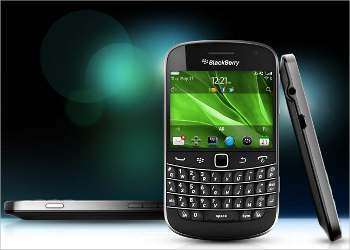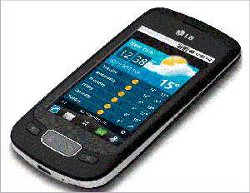At a time when there is more than 5.5 lakh Android based smartphone are activated daily, consumers are in a dilemma which one to go for and if budget is a constraint, it becomes an uphill task to zero in on a specific handset.
Last time, we did a report on “Best Android phones under Rs 10,000” but the scenario has so far changed in last three months. Now, there are a whole bunch of new Android smartphones, launched by various manufacturers, in India.
In the current ‘Best Android Phones under Rs 10,000″ list, two handsets (from the previous list) retained their position while three new handsets made their way into the top five.
 LG OPtimus One
LG OPtimus One
LG Optimus Me
While the LG has not been ruling the Android market, as it has very few offerings, it has improved that position by adding three new phones in the past couple of months. While the two handsets, namely Optimus 2X and Optimus Black, are costlier and are out of this price bracket. The third one, the Optimus Me, is the cheapest Android phone from LG.
Although the Optimus Me is an attractive preposition, it fails to dislodge its bigger stablemate – the Optimus One – from the list. Last time we rated it at number 5 but this time it finds its place as number one.
Optimus One, which was launched more than a year ago, still is a strong contender and continues to be the best choice for the budget conscious.
Featuring Android V2.2 (upgradable to 2.3), Optimus One stands tall among the phones in the list, while the Processor is the standard 600Mhz. What seals the deal is its 512MB RAM and dedicated graphics engine, making it very smooth to operate.
The screen is a 3.2 inch capacitive touchscreen that is both responsive and delivers excellent display with vibrant colour and good sharpness. The 3.2 Megapixel camera does its job just well enough, but the 1500mAH battery gives it excellent battery life for an Android phone.
Currently available for Rs 10,000, this is not really cheap but then you get stuff that is found in higher priced phones.
 Samsung Galaxy Pop S5570
Samsung Galaxy Pop S5570
The second position goes to Samsung Galaxy Pop S5570. It has everything that the LG Optimus One has but it has smaller Internal Memory than the former, which robs the smoothness a bit. Having said that, it makes for the smaller internal memory with a price of just Rs 8,300.
This is a close fight and we have given the number one position also due to the fact that Optimus one has upgradable OS and the battery of the Galaxy Pop is smaller 1200mAH one which for sure offers lesser back up.
The phone has a 3.2 inch capacitive touchscreen which is comparable to the best in the segment, and a 3 megapixel camera. The quality and the finish is top notch; the service and brand back up is another plus.
If you are a Samsung fan, this is a sure buy for this budget. Extend the budget a little over Rs 11,000, you can buy Galaxy Fit, which is a better choice.
 Micromax A70
Micromax A70
This one replaces its elder sibling the Andro A60, in the list. The list of improvement include a bigger 3.2 inch capacitive screen (Andro had 2.8 inch, resistive), which provides much better and smoother user experience.
While all the other features are similar to the top two phone, it scores over the two with its bigger 5 megapixel camera.
A70’s 1450mAH battery is between the top two phone while it costs Rs 8,000, just two three hundred rupees cheaper than Galaxy Pop. So given that the brand value of the Samsung is better than Micromax, the A70 gets the third place, else A70 is very much at par with the Galaxy.
Sony Ericsson Xperia X8
 This one has the smallest screen here, a 3.0 inch capacitive display. But what seals the deal is Sony’s expertise in music and camera. The user interface of this phone is the most unique here with corner widgets on the four corners of the screen for easy access to the main features of this phone.
This one has the smallest screen here, a 3.0 inch capacitive display. But what seals the deal is Sony’s expertise in music and camera. The user interface of this phone is the most unique here with corner widgets on the four corners of the screen for easy access to the main features of this phone.
Rest of the features are standard with 600MHz of processor, albeit a lower RAM of 126MB. Although, the phone comes with Android 1.6 but the upgrade is available free of cost to Android 2.1. Also, another downside of it is that its memory can be expanded only by 16GB but then how many of us do utilise the 32 GB capacity.
The phone is the second most costly device here with a price tag of Rs 9,500, and with many drawbacks like smaller RAM, older version Android. The only reason why it finds its place here is because of its music, camera capability and unique user interface.
Spice Mi 310
 This Spice phone was new when we prepared the list last time. This time, it is at the fifth place mainly on account of its smaller 2 megapixel camera and better brand value that the three phones above carry.
This Spice phone was new when we prepared the list last time. This time, it is at the fifth place mainly on account of its smaller 2 megapixel camera and better brand value that the three phones above carry.
All the specification of the top three phones are more or less matched by this Spice phone with a 3.2 inch capacitive display, WiFi, Bluetooth, and 3G. Although, it has a negative aspect in terms of the smaller battery, which is of 1200 mAH.
At Rs 7,300, it is most attractively priced among the phones in this list, and if you are willing to forgive it for its two megapixel camera then there is nothing wrong about this phone especially at this price point. The quality is good and is a match for the better known brands. You can see the detailed review here.
Other you can consider
Huawei Ideos U8500:This one is worth considering; the only reason why it has not made its way into the top five list is due to the fact that the review handset we got from the company was unusually slow. But, Huawei said it was a problem with that particular unit and has promised to send a replacement unit. And if that’s not an issue it would have found its place in the three. It costs only Rs 8,000.
Motorola Charm: Must watch if you love touch and physical keypad combo, price Rs 8,500, Galaxy Pro is another option in this type of phone.



 BlackBerry Bold 9900/9930 features a 2.8-inch capacitive touch screen display with 287 PPI resolution and 640×480
BlackBerry Bold 9900/9930 features a 2.8-inch capacitive touch screen display with 287 PPI resolution and 640×480 



 This one has the smallest screen here, a 3.0 inch capacitive display. But what seals the deal is Sony’s expertise in music and camera. The user interface of this phone is the most unique here with corner widgets on the four corners of the screen for easy access to the main features of this phone.
This one has the smallest screen here, a 3.0 inch capacitive display. But what seals the deal is Sony’s expertise in music and camera. The user interface of this phone is the most unique here with corner widgets on the four corners of the screen for easy access to the main features of this phone. This Spice phone was new when we prepared the list last time. This time, it is at the fifth place mainly on account of its smaller 2 megapixel camera and better brand value that the three phones above carry.
This Spice phone was new when we prepared the list last time. This time, it is at the fifth place mainly on account of its smaller 2 megapixel camera and better brand value that the three phones above carry.